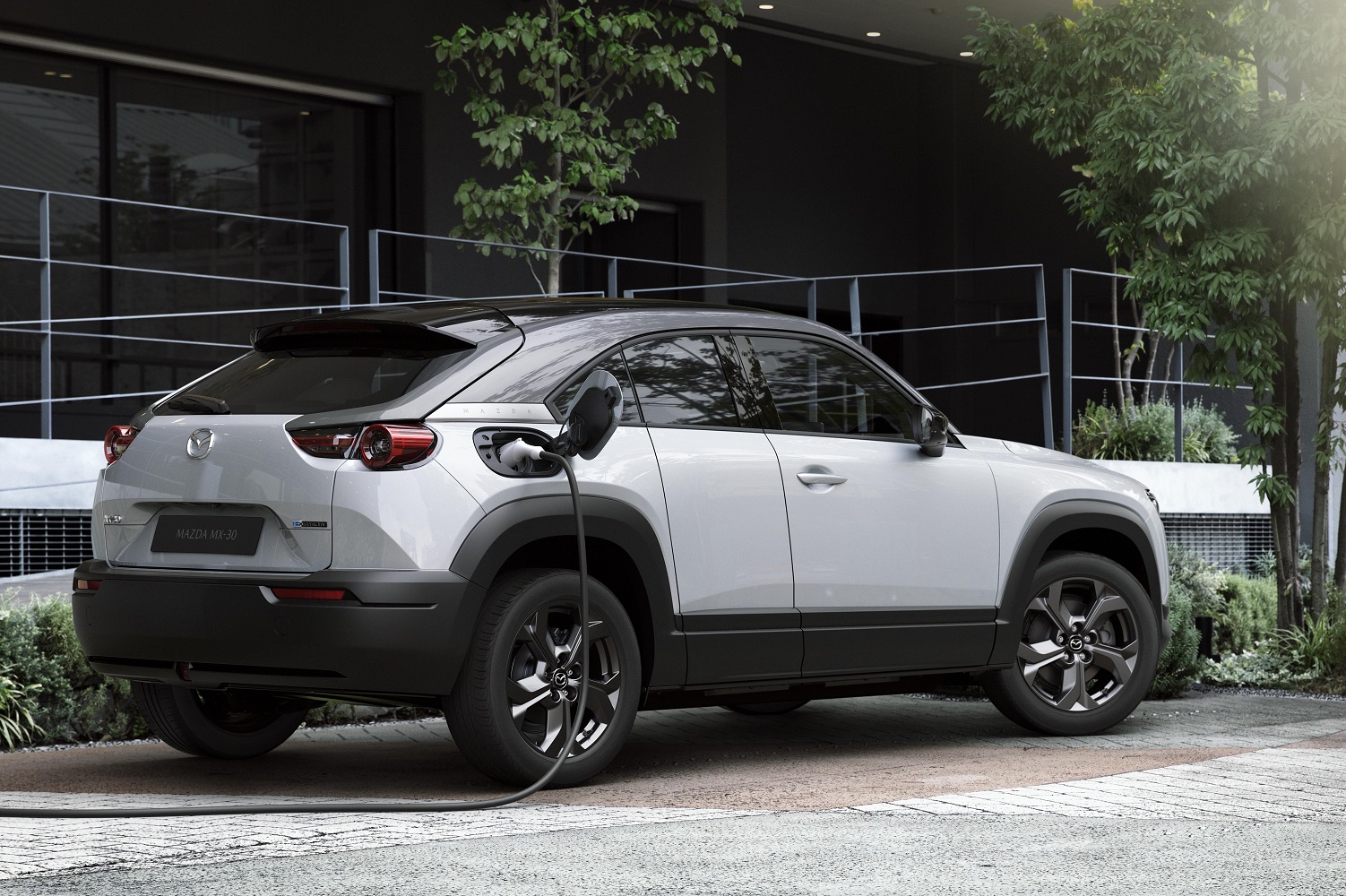
Mazda’s first production electric car, the MX-30, uses a relatively small 35.5-kilowatt-hour battery pack. Mazda claims that it will allow up to 130 miles of driving per charge, which doesn’t seem like much when many electric cars can achieve over 200 miles of range. But Mazda chose the small battery pack for a reason.
The MX-30’s battery pack will achieve the lowest possible carbon emissions in terms of life cycle, Christian Schultze, head of Mazda Europe’s research and development center, said in an interview with Automotive News Europe. While using a larger battery pack would increase range, it would also create substantially higher emissions, according to Schultze. Those increased emissions would come both from higher electricity consumption and manufacturing, according to Schultze.
It’s unclear if Mazda’s sales pitch of reduced life cycle carbon emissions will resonate with customers. Lower emissions should be a priority — that’s the reason for switching from internal combustion to electric power in the first place. The MX-30 will also likely have enough range for many people’s commutes, especially if drivers can install a home charging station to recharge at night. But competitors offer much greater range.
The electric version of the Hyundai Kona — a crossover of similar size to the MX-30 — is rated at 258 miles on the United States testing cycle, which is much stricter than the European WLTP (Worldwide Harmonized Light Vehicle Test Procedure) testing cycle Mazda used for its range estimates. U.S. buyers can also get a Chevrolet Bolt EV hatchback with 259 miles of range, while the larger Kia Niro EV is rated at 239 miles per charge. The lowest-range Tesla Model 3 can still go 240 miles per charge.
Mazda isn’t the only automaker offering a low-range electric car, though. The base Nissan Leaf is rated at 150 miles, and Nissan also offers an optional larger battery pack good for up to 226 miles of range. Mini is about to launch an electric car with just 110 miles of range, while Hyundai is boasting about increasing the range of its Ioniq from 124 miles to 170 miles. But cars like these car becoming outliers. Even Mazda plans to eventually offer an optional internal-combustion range extender for the MX-30.
The Mazda MX-30 will start production toward the end of 2020, but Mazda hasn’t said whether the electric car will be sold in the U.S. Mazda may initially concentrate on European sales. Stricter emissions standards have led other automakers to shift emphasis to the European market. Mazda could introduce the MX-30 to the U.S. at a later date, or it may wait until a longer-range model is available.
Editors' Recommendations
- The Lucid Gravity has more range than any other electric SUV
- Rivian R1T gets estimated 410 miles of range with Dual-Motor powertrain, Max Pack battery
- Volvo EX30 price, range, release date, specs, and more
- Why charging speed is as important as range for owners of electric cars
- Giant new battery pack could give Tesla’s Model S 400-plus miles of range


